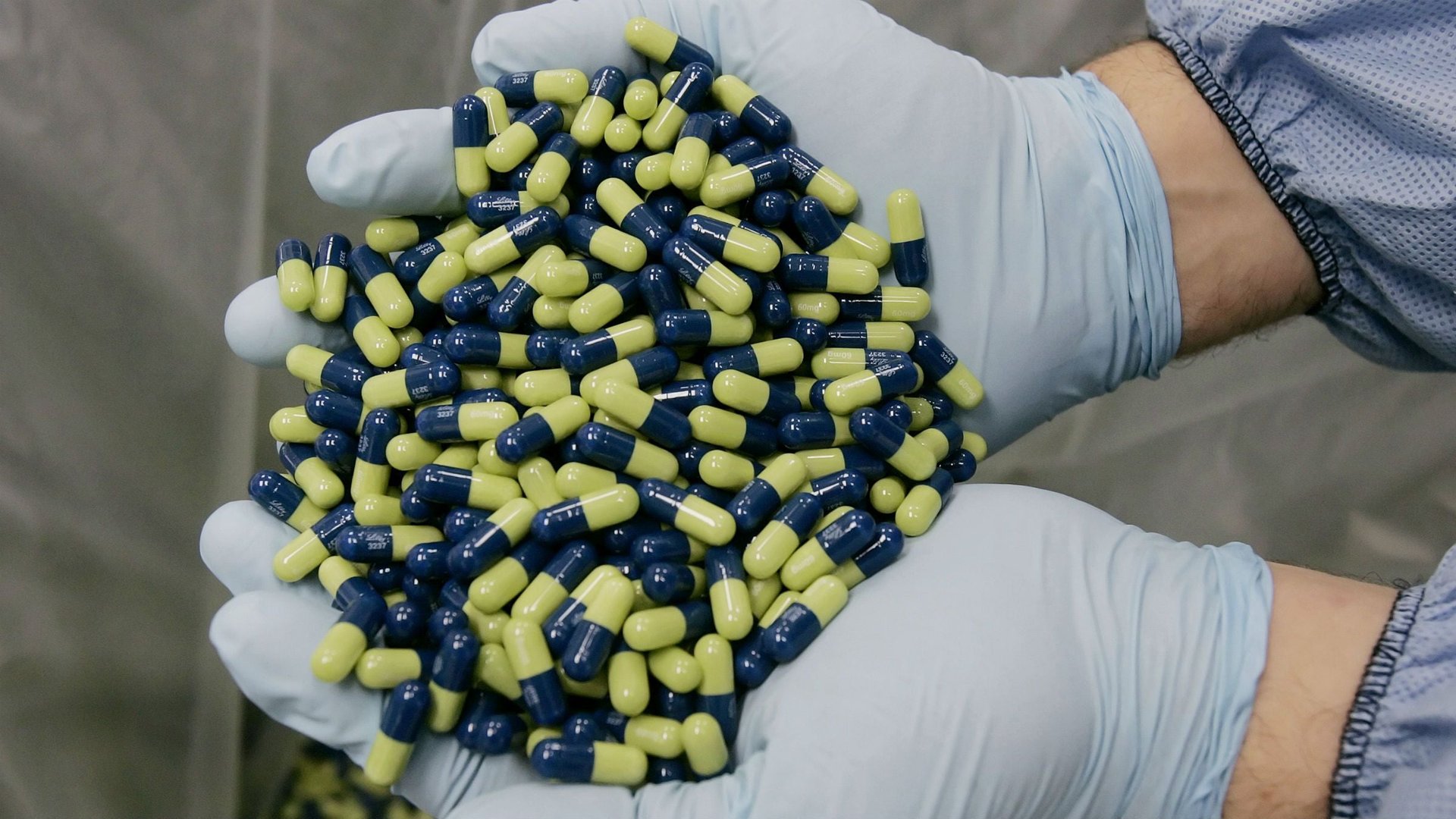How this medication became 50 times more expensive overnight in the US
Lately, there has been a lot of of interest over a new drug to cure Hepatitis C—a disease that’s surpassed AIDS in number of death since 2007.


Lately, there has been a lot of of interest over a new drug to cure Hepatitis C—a disease that’s surpassed AIDS in number of death since 2007.
Sovaldi, a medication produced by American pharmaceutical company Gilead, has a 90% success rate in treating the disease compared to a 50% success rate of the other existing treatments.
But the reason why Sovaldi is at the center of the public arena isn’t its efficacy, but rather its cost in the US. A full course of a 12-week treatment of Sovaldi costs $87,000—or $1,000 a pill—a price tag that generated outrage, and a hearing on Dec. 3 by the Veteran Affairs Committee on the cost of the drug since the disease occurs three times higher in veterans than the than the general population.
The exorbitant price of Sovaldi is an example of how US consumers, and the government, have little recourse when it comes to the price of medication when compared to European countries.
Although the cost of the treatment is steep, there are a few things that help put it in perspective. The drug is an innovative treatment—which means new development costs had to be faced by Gilead—and with its success rate it’s likely to prevent the need for a liver transplant, which has an average cost of $577,000, for Hepatitis C patients when treatment fails.
There are other examples of “opportunistic pricing” in the US pharmaceutical industry that seem even more arbitrary. One such example is the cost of Colcrys—Japanese pharmaceutical Takeda’s brand of colchicine—a medication in its generic form that has been used to treat gout for centuries.
Though its name evokes medieval scenarios, gout is still a rather debilitating disease: it’s the most common form of inflammatory arthritis, and it’s on the rise.
Until 2010, colchicine used to cost $0.09 a tablet. Then its price rose to $4.85 a tablet.
That’s right: the exact same drug became 50 times more expensive.
What happened is in June 2006, the US Food and Drug Administration (FDA) launched the Unapproved Drugs Initiative (UDS), a program that required all unregulated drugs to receive FDA approval. Colchicine, which had been marketed by several manufacturers, was one of them.
In 2009 URL Pharma (which has since been acquired by Takeda), took the initiative to get approval for Colcrys as a “single-ingredient colchicine medication”—essentially, good old colchicine. Although this was essentially the same drug marketed pre-UDS, it had to go through new clinical trials and it was submitted for approval as a new drug.
Once the approval for Colcrys was obtained from the FDA in 2010, all other marketed colchicine became illegal in the US. With no competition, Takeda was essentially able to set the price at its own will, and it has been fiercely defending its right to do so. In February, the company filed a law suit against the maker of an equivalent generic drug—effectively reducing any faint hope that gout patients could have access to colchicine at a cheaper price anytime soon.
A cycle of therapies for gout requires patients to take one or two tablets a day for up to 12 months, with a cost between $1,800 and $3,600—in 2009, the same course of treatment would have cost about $32 to $60.
The cost of the same medication in other countries is much lower, about $0.15 per tablet in Italy, and $0.2 in France—that makes it $146 for a full treatment course.
“It’s been an unfortunate situation for a lot of patients who cannot afford the medications,” Dr Alan Baer, the director of the gout clinic at Johns Hopkins School of Medicine, told Quartz. While, he said, URL Pharma did conduct studies that led to a lower dose regime, he calls this one of the “gimmicks” a pharmaceutical company can adopt to raise the price of a medication.